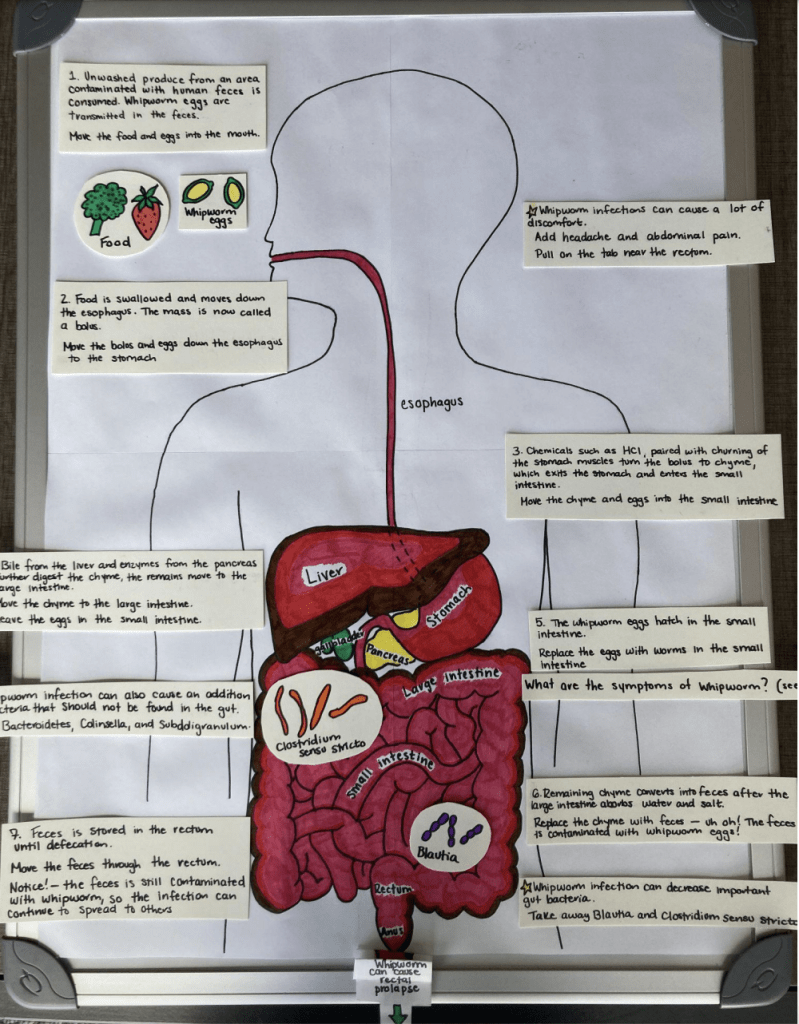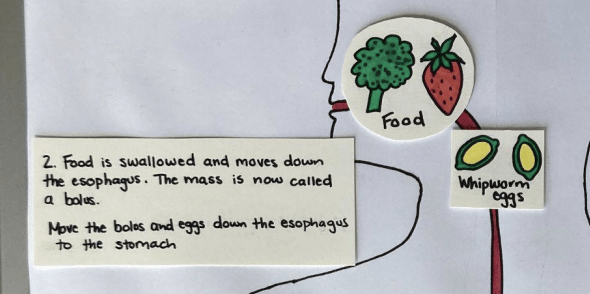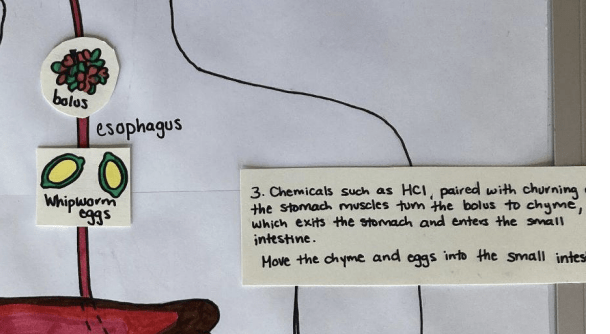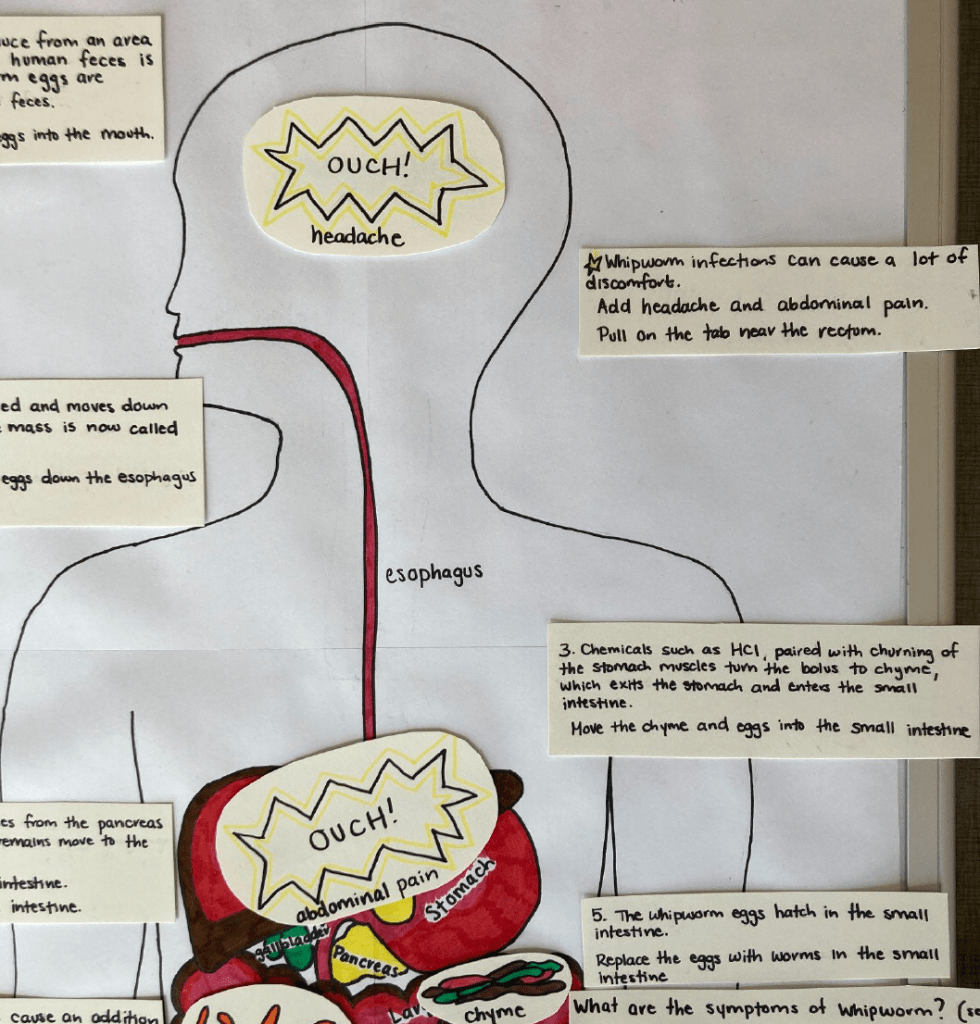Created by Meara Plesh-Gill
Meara created an interactive display that allows participants to discover what happens when whipworm infects the body and how interactions with humans and the microbes within humans impact disease and further transmission of the parasite.
- Drawing of the organs of the human body labeled according to what happens as whipworm progresses through the body
- Food is swallowed and moves down the esophage. The mass is now called a bolus. Move the bolus and eggs down the esophagus to the stomach.
- Chemicals such as HCl, paired with churning of the stomach muscles, turn the bolus into chime, which exits the stomach and enters the small intestine.
- Zoom in of the intestines and explanations for outcomes of disease.
- Zoom in of the intestines and microbes with which the whipworm may interact.
- Zooming out to show symptoms of disease





